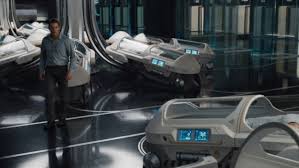
Breaking News
Living a Creative Life Maximizes Your Life
SEMI-NEWS/SEMI-SATIRE: November 9, 2025 Edition
 Trump pardons Mets legend, 'Celebrity Apprentice' alum Darryl Strawberry over tax evasion co
Trump pardons Mets legend, 'Celebrity Apprentice' alum Darryl Strawberry over tax evasion co
 You WON'T BELIEVE How Much Money We're REALLY Sending To Israel!
You WON'T BELIEVE How Much Money We're REALLY Sending To Israel!
Top Tech News
 HUGE 32kWh LiFePO4 DIY Battery w/ 628Ah Cells! 90 Minute Build
HUGE 32kWh LiFePO4 DIY Battery w/ 628Ah Cells! 90 Minute Build
 What Has Bitcoin Become 17 Years After Satoshi Nakamoto Published The Whitepaper?
What Has Bitcoin Become 17 Years After Satoshi Nakamoto Published The Whitepaper?
 Japan just injected artificial blood into a human. No blood type needed. No refrigeration.
Japan just injected artificial blood into a human. No blood type needed. No refrigeration.
 The 6 Best LLM Tools To Run Models Locally
The 6 Best LLM Tools To Run Models Locally
 Testing My First Sodium-Ion Solar Battery
Testing My First Sodium-Ion Solar Battery
 A man once paralyzed from the waist down now stands on his own, not with machines or wires,...
A man once paralyzed from the waist down now stands on his own, not with machines or wires,...
 Review: Thumb-sized thermal camera turns your phone into a smart tool
Review: Thumb-sized thermal camera turns your phone into a smart tool
 Army To Bring Nuclear Microreactors To Its Bases By 2028
Army To Bring Nuclear Microreactors To Its Bases By 2028
 Nissan Says It's On Track For Solid-State Batteries That Double EV Range By 2028
Nissan Says It's On Track For Solid-State Batteries That Double EV Range By 2028
The hibernation science in 'Passengers' is not far from reality

Before humans travel to another planet—and that day may be coming soon—a question will need to be answered: How will astronauts spend their time on a months- or years-long interplanetary voyage?
In the movie Passengers, which hits theaters today, more than 5,000 people board the starship Avalon on a 120-year journey to a new world called Homestead II. Prior to launch they each enter a "hibernation pod," which, through drugs and environmental controls, puts them into a suspended animation. Essentially, they're meant to sleep through all but four months of the century-long trek.
Currently, humanity is nowhere near ready for the interstellar journey that Jim Preston (Chris Pratt) and Aurora Lane (Jennifer Lawrence) undertake, but this sci-fi hibernation technology is actually grounded in today's reality. NASA is helping to fund the research of SpaceWorks Enterprises, a company that aims to put astronauts into artificial hibernation through a process similar to that depicted in Passengers.

 Carbon based computers that run on iron
Carbon based computers that run on iron

